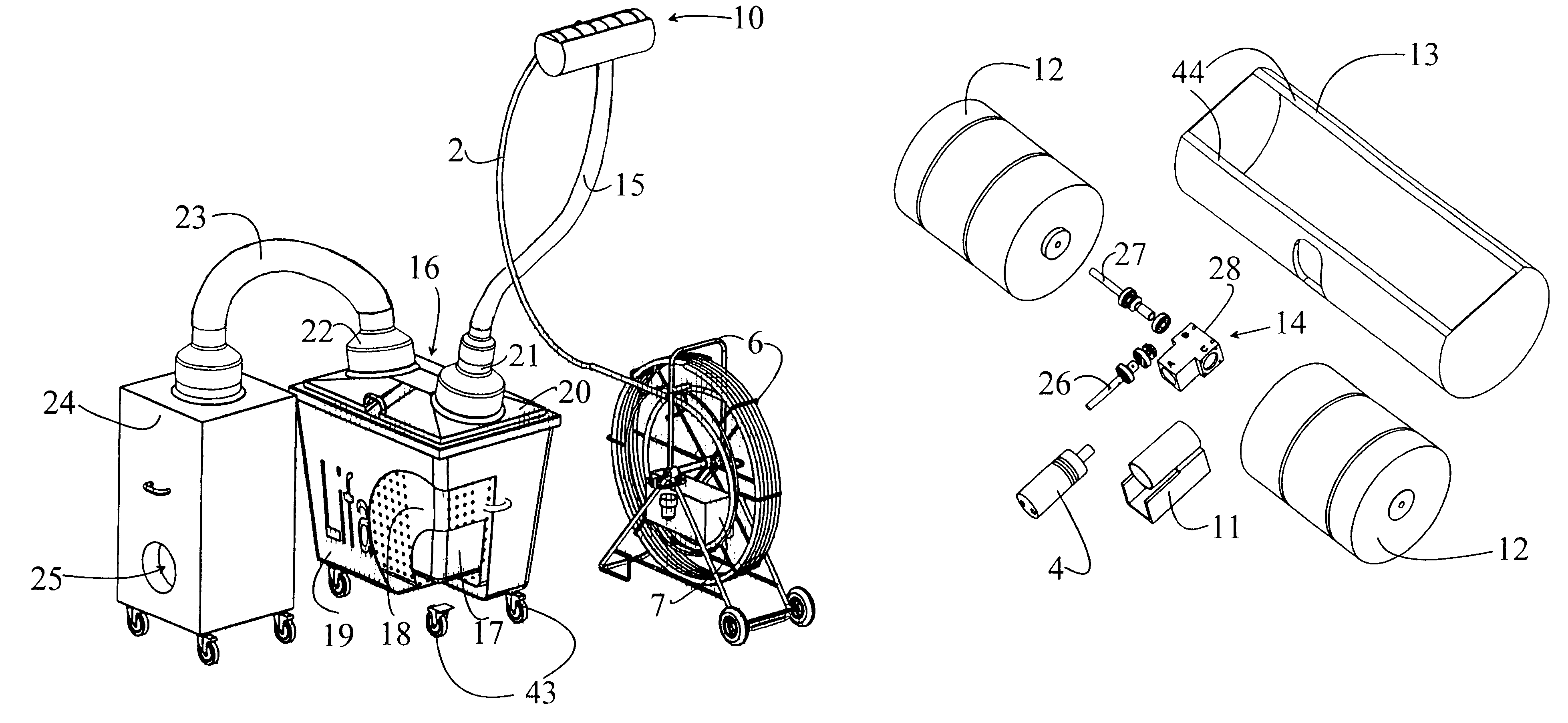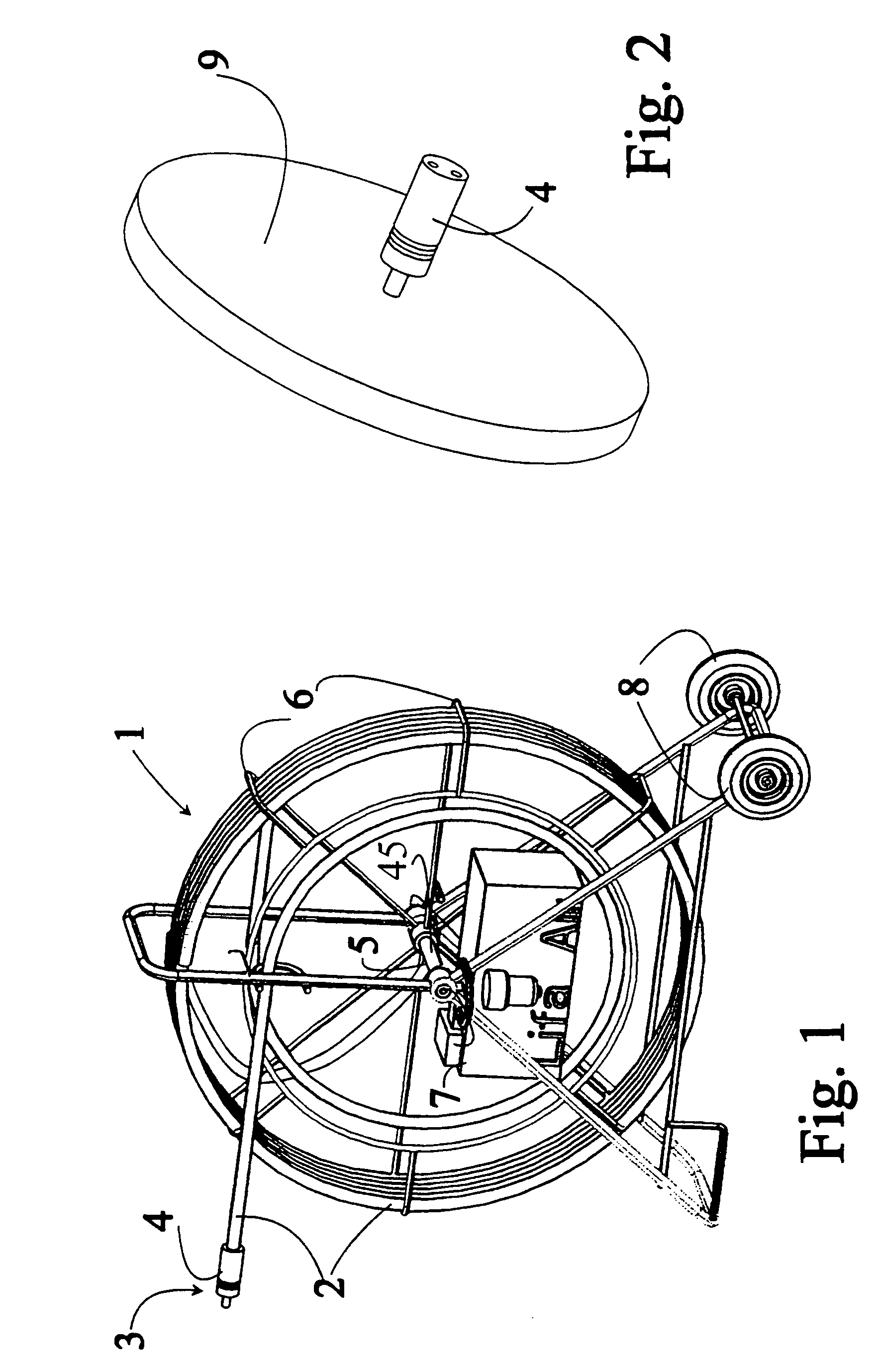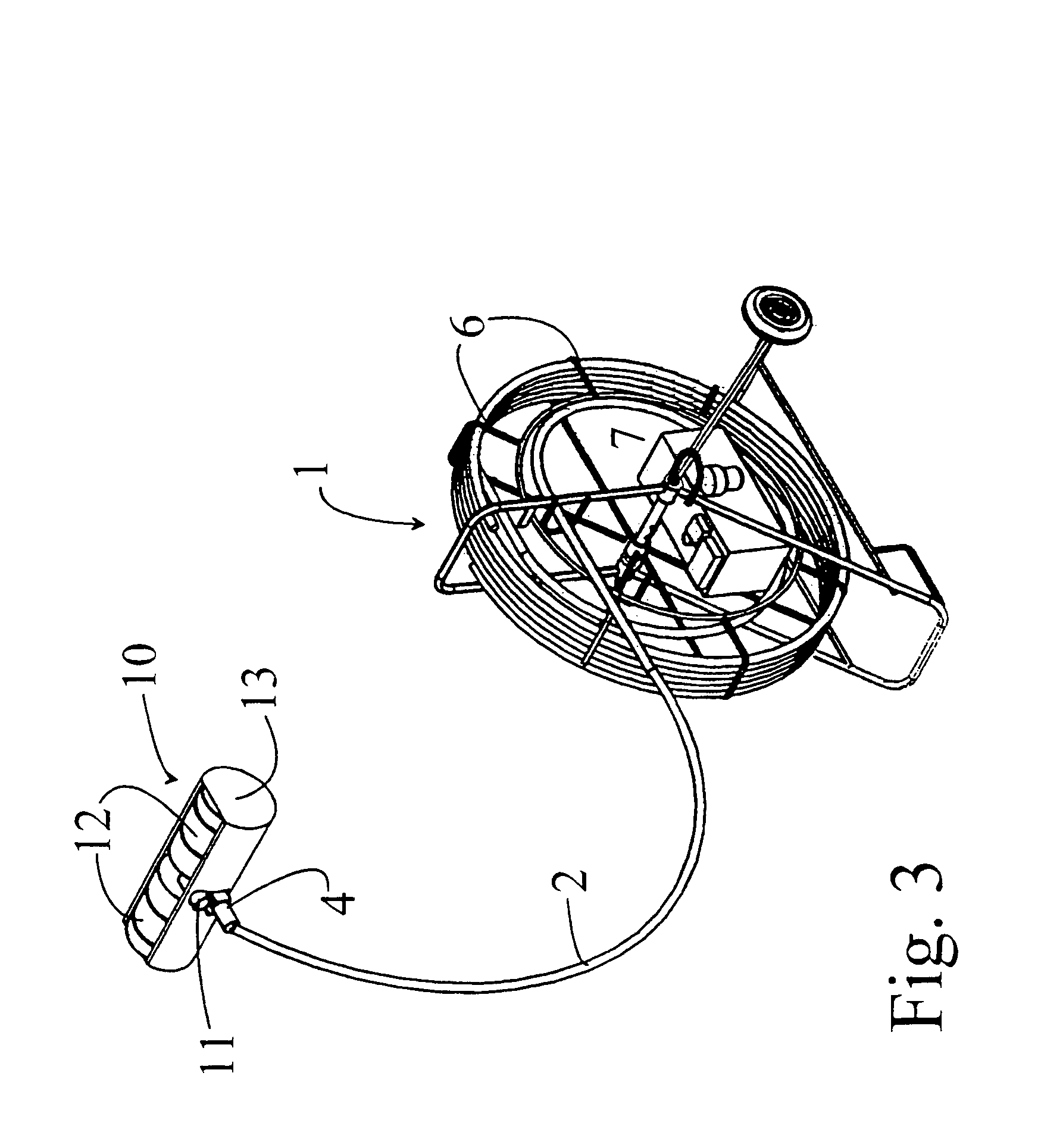Apparatus for cleaning channels for air conditioning and other purposes
a technology for air conditioning and apparatus, applied in the direction of dirt cleaning, hollow article cleaning, combustion treatment, etc., can solve the problems of affecting the cleaning effect of the size and thereby weight of the electric motor become too large to allow sensible movement, and the sparking of the electric motor inside the space to be cleaned constitutes a severe risk of fire and explosion
- Summary
- Abstract
- Description
- Claims
- Application Information
AI Technical Summary
Benefits of technology
Problems solved by technology
Method used
Image
Examples
Embodiment Construction
[0032]In the description the invention below, the following terminology with corresponding reference numberals will be used:[0033]1 cleaning arrangement[0034]2 guide wire cable[0035]3 cleaning end[0036]4 hydraulic motor[0037]5 feed end[0038]6 coil carriage[0039]7 hydraulic aggregate[0040]8 wheels[0041]9 radial brush[0042]10 transverse workhead[0043]11 suction connector[0044]12 cylinder brush[0045]13 hood[0046]14 herringbone gear[0047]15 suction pipe[0048]16 receiver unit[0049]17 receiver bag[0050]18 inner casing[0051]19 outer casing[0052]20 flow distributor cover[0053]21 inlet connector[0054]22 underpressure connector[0055]23 suction pipe[0056]24 underpressure unit[0057]25 exhaust outlet[0058]26 primary shaft[0059]27 secondary shaft[0060]28 gear body[0061]29 electric motor[0062]30 hydraulic pump[0063]31 1st adjustable pressure limit valve[0064]32 2nd adjustable pressure limit valve[0065]33 hydraulic filter[0066]34 1st reverse flow valve[0067]35 2nd reverse flow valve[0068]36 3rd rev...
PUM
 Login to View More
Login to View More Abstract
Description
Claims
Application Information
 Login to View More
Login to View More - R&D
- Intellectual Property
- Life Sciences
- Materials
- Tech Scout
- Unparalleled Data Quality
- Higher Quality Content
- 60% Fewer Hallucinations
Browse by: Latest US Patents, China's latest patents, Technical Efficacy Thesaurus, Application Domain, Technology Topic, Popular Technical Reports.
© 2025 PatSnap. All rights reserved.Legal|Privacy policy|Modern Slavery Act Transparency Statement|Sitemap|About US| Contact US: help@patsnap.com



